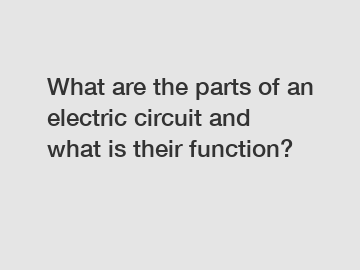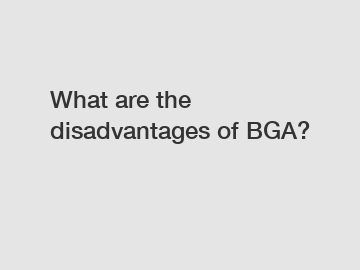What are the parts of an electric circuit and what is their function?
When it comes to understanding how an electric circuit works, it's essential to know the different parts that make up the circuit and their functions. Let's break it down and make it as simple as possible for you to understand.
1. Power Source:
First and foremost, every electric circuit needs a power source to function. This could be a battery, a generator, or even an outlet. The power source provides the energy needed to make the circuit work.

2. Conductors:
Conductors are materials that allow electricity to flow through them easily. Copper wires are the most common conductors used in electric circuits. They connect the different components of the circuit, allowing the electricity to flow from the power source to the load.
3. Switches:
Switches control the flow of electricity in a circuit. When a switch is on, it allows the electricity to flow through the circuit. When it's off, it stops the flow of electricity. This is important for turning devices on and off.
4. Load:
The load is the part of the circuit that consumes the electrical energy. It could be a light bulb, a motor, or any other electrical device. The load converts the electrical energy into another form of energy, such as light or motion.
5. Resistors:
Explore more:Which display is best OLED or LCD?
Which cutting-edge technologies will transform automotive carbon ink boards?
What are the different types of wirewound resistors and their uses?
The Ultimate Guide: Discovering LCD TFT Modules & Their Incredible Benefits!
Boost Profits: Unveiling Effective MCHC11F1VFNE4 Broker-Distributor-Dealer Strategies
Where should the arrow board be placed on a typical flagger operation?
Where should the arrow board be placed on a typical flagger operation?
Resistors are components that limit the flow of electricity in a circuit. They are used to control the amount of current that flows through the circuit. This helps protect sensitive components from getting damaged by too much electricity.
6. Capacitors:
Capacitors store electrical energy in the form of an electric field. They can release this energy when needed, providing a burst of electricity to the circuit. Capacitors are often used to stabilize the voltage in a circuit.
7. Diodes:
Diodes are electronic components that allow electricity to flow in only one direction. They are used to control the flow of electricity and protect sensitive components from getting damaged by reverse current.
8. Transistors:
Transistors are used to amplify or switch electrical signals in a circuit. They are essential for controlling the flow of electricity in more complex circuits, such as those found in electronic devices.
In summary, an electric circuit is made up of several key parts that work together to make the circuit function. The power source provides the energy, conductors allow the electricity to flow, switches control the flow, loads consume the energy, resistors limit the flow, capacitors store energy, diodes control the direction of flow, and transistors amplify or switch signals.
Understanding these parts and their functions is essential for building and troubleshooting electric circuits. If you have any questions about electric circuits or need help finding the right components, feel free to contact us. Our team of experts is here to assist you and provide you with the best quality components from our trusted suppliers.
If you want to learn more, please visit our website Customized Metal Oxide Semiconductor Solution, MP4462DQ-LF-Z, TPS1HB08BQPWPRQ1 Electronic Components.
Explore more:What are the advantages of using a Liquid Crystal display module in a Fuel Dispenser?
Creating Custom Characters for LCD 1602: How to Showcase Your Creativity?
Which innovative uses of LCD 1602 custom characters are revolutionizing design?
The Power of Heavy Copper PCB: Unleashing Potential
Demystifying Metal Film Resistors: The Key to Optimizing Electronic Circuits | Indonesian Solutions
Boost Your Display Performance: Unveiling the Pros of TFT LCD Modules
How to get discount on EV charging?










